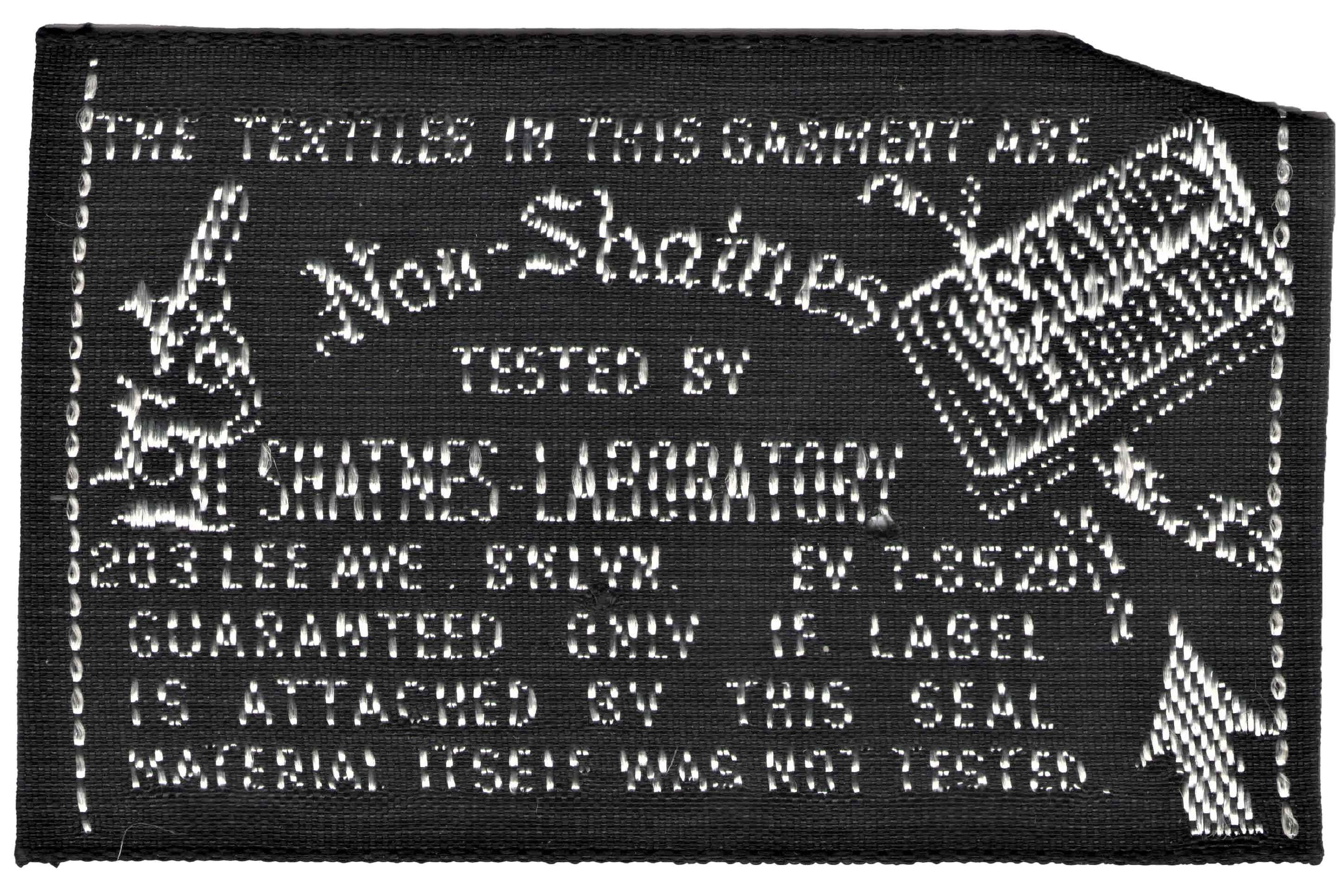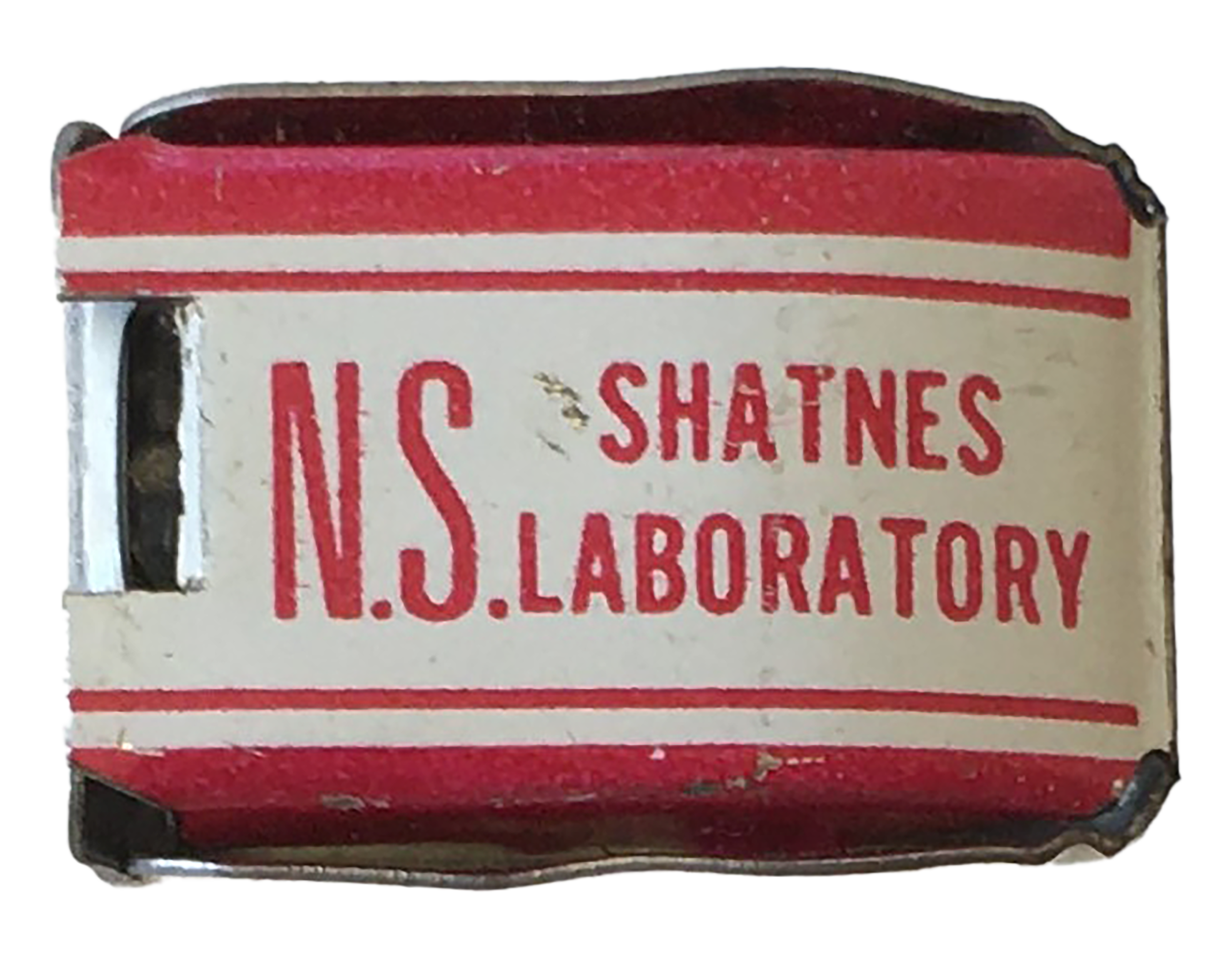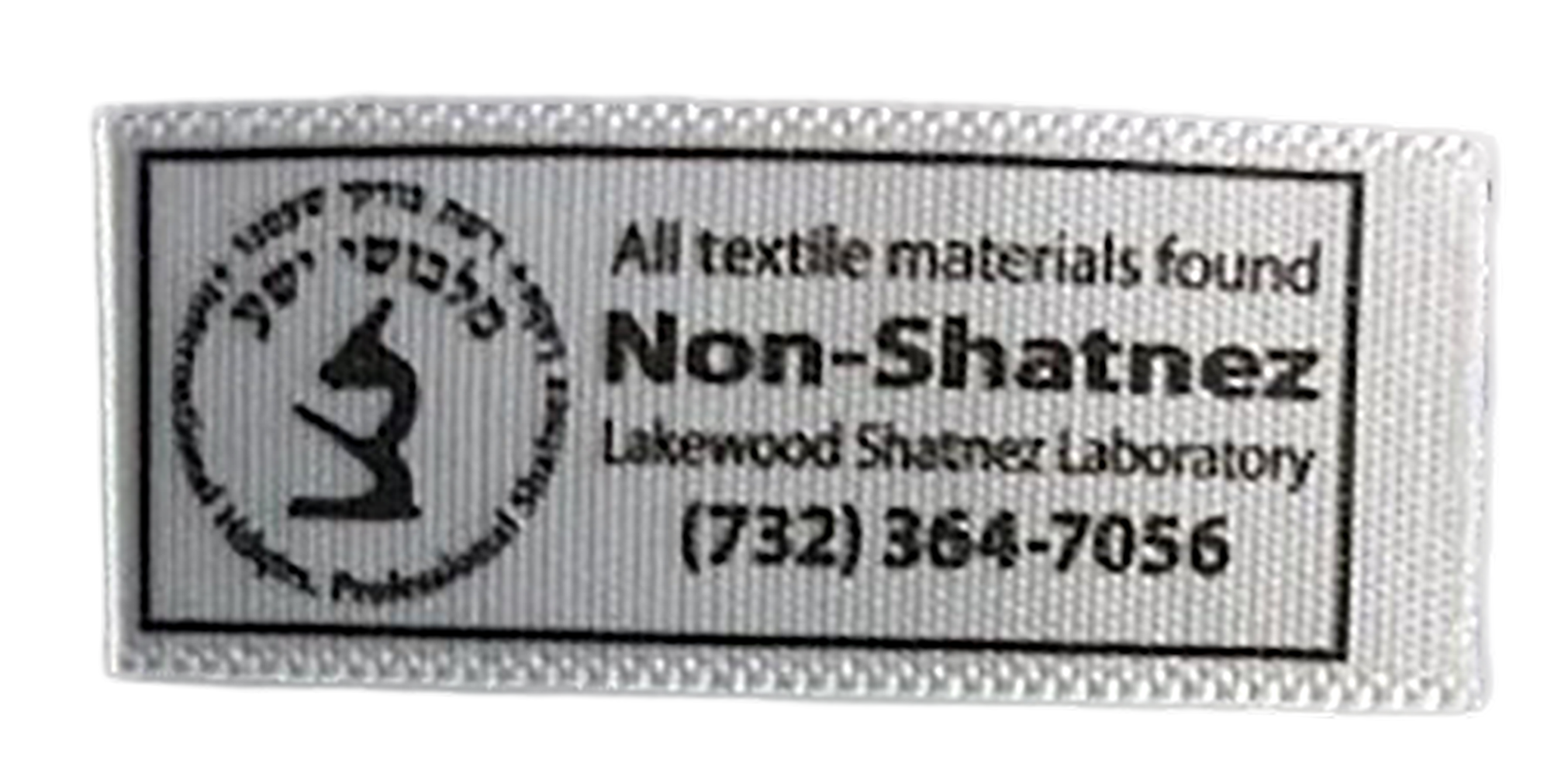(Shatnez patch)

Label attached to garments certifying the absence of any biblically prohibited combination of wool and linen (shatnez)



What is shatnez?
Berman, Jeremiah J. “Shehita: A Study in the Cultural and Social Life of the Jewish People”. Bloch Publishing Company, New York, 1941. 514 pp.
Cooper, Samuel. “The Laws of Mixture: An Anthropological Study in Halakhah.” Judaism Viewed from Within and from Without: Anthropological Studies, edited by Harvey E. Goldberg, State University of New York Press, 1987, pp. 55-74.
Gildas Hamel, “Sacred and profane in clothing: sha’atnez,” 2002. Revised 2013 and April 27, 2021. https://bpb-us-e1.wpmucdn.com/sites.ucsc.edu/dist/9/20/files/2021/04/shaatnez.pdf.
Jacobs, Jill. “What is Shatnez?” Myjewishlearning.com. No date.
Kisch, Bruno. “Jewish Community Tokens, A Neglected Field in Jewish Numismatics” in Historia Judaica Vol XV 1953 pp. 167-182.
Mizrachi, Meital P. (2024). From Shatnez to Upcycling: Zoom in on Sustainable Fashion in Israel and in Judaism. Fashion Theory, 28(5–6), 729–754. https://doi.org/10.1080/1362704X.2024.2397858
Philologos. “The Proof of the Exodus hidden in the Ancient Word Sha’atnez,” Mosaic, 7 September 2022.
Shamir, Orit. “Sha’atnez – The Biblical Prohibition Against Wearing Mixed Wool and Linen Together and the Observance and Enforcement of the Command in the Orthodox Jewish Communities Today.” Textile Terminologies from the Orient to the Mediterranean and Europe, 1000 BC to 1000 AD, edited by Salvatore Gaspa, Cécile Michel, & Marie-Louise Nosch, Zea Books, 2017, pp. 164-172. https://digitalcommons.unl.edu/cgi/viewcontent.cgi?article=1009&context=texterm
Silverman, Eric. A Cultural History of Jewish Dress. London: Bloomsbury Academic, 2013, pp. 128-130.
Select a language